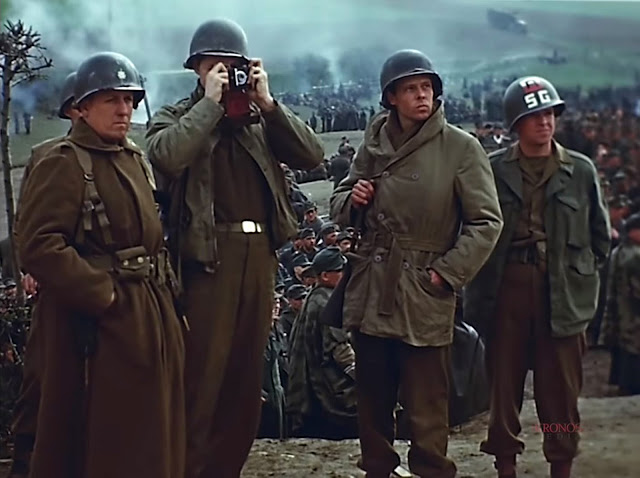 In this May 1945 photograph taket at Mossburg, Germany, recently liberated American prisoners of war await transportation during their journey home. The boys borrowed this table for mess purposes after being freed. In the rear is a tent which housed two hundred of them. They are the ones that made it through alive. Without the Wehrmacht gear and grim wartime faces, they are just a bunch of blokes hanging out in the sun having their picture taken. Different story for most of them on the inside though... Notice the guy in 'civvies' (2nd from left) wearng a Wehrmacht Heer Schirmmütze (visor cap)!
In this May 1945 photograph taket at Mossburg, Germany, recently liberated American prisoners of war await transportation during their journey home. The boys borrowed this table for mess purposes after being freed. In the rear is a tent which housed two hundred of them. They are the ones that made it through alive. Without the Wehrmacht gear and grim wartime faces, they are just a bunch of blokes hanging out in the sun having their picture taken. Different story for most of them on the inside though... Notice the guy in 'civvies' (2nd from left) wearng a Wehrmacht Heer Schirmmütze (visor cap)! Source :
US AIR FORCE photo collection
https://www.facebook.com/photo/?fbid=4009850899101693&set=gm.1716596251859124

































